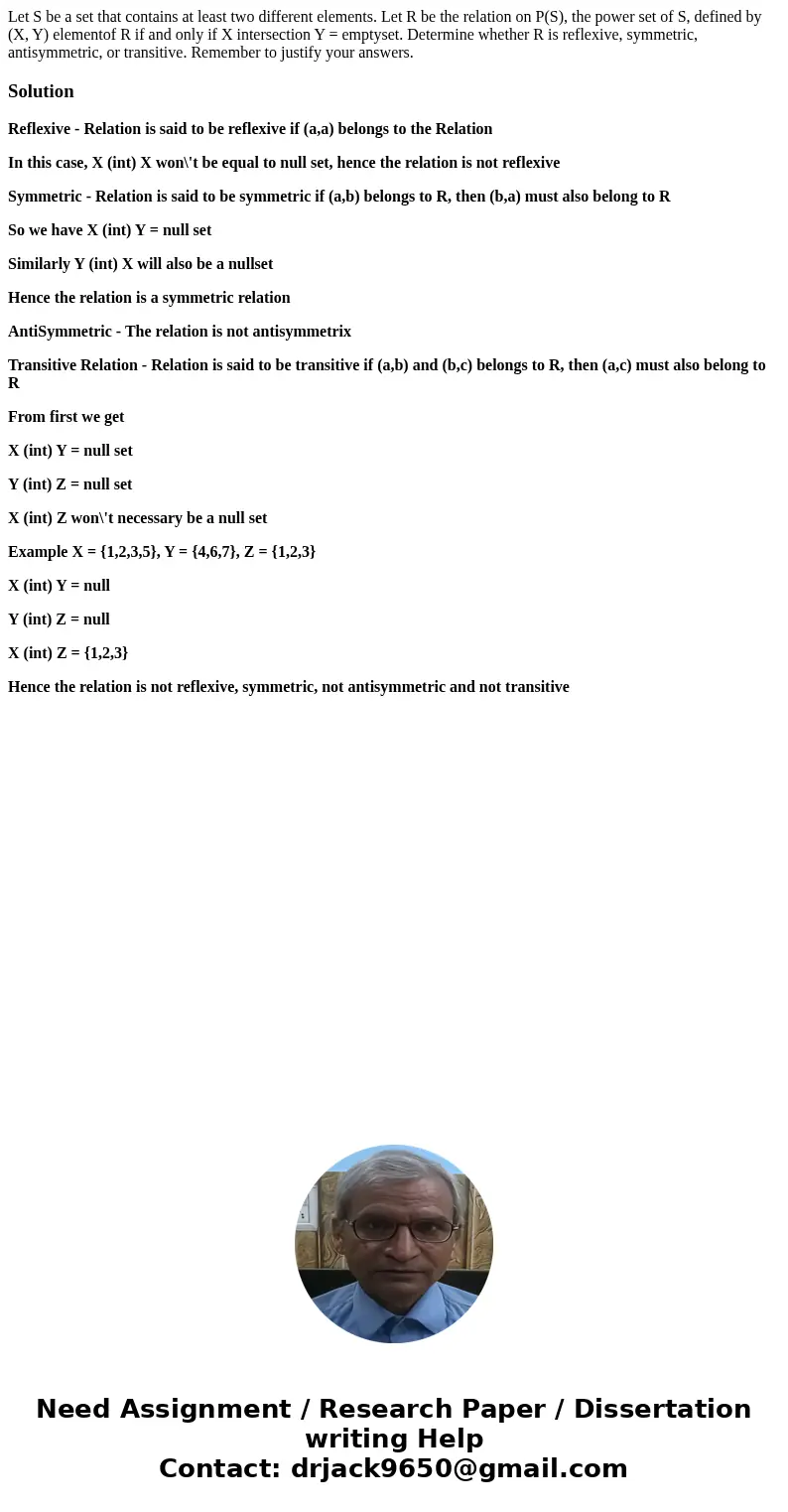Let S be a set that contains at least two different elements
Solution
Reflexive - Relation is said to be reflexive if (a,a) belongs to the Relation
In this case, X (int) X won\'t be equal to null set, hence the relation is not reflexive
Symmetric - Relation is said to be symmetric if (a,b) belongs to R, then (b,a) must also belong to R
So we have X (int) Y = null set
Similarly Y (int) X will also be a nullset
Hence the relation is a symmetric relation
AntiSymmetric - The relation is not antisymmetrix
Transitive Relation - Relation is said to be transitive if (a,b) and (b,c) belongs to R, then (a,c) must also belong to R
From first we get
X (int) Y = null set
Y (int) Z = null set
X (int) Z won\'t necessary be a null set
Example X = {1,2,3,5}, Y = {4,6,7}, Z = {1,2,3}
X (int) Y = null
Y (int) Z = null
X (int) Z = {1,2,3}
Hence the relation is not reflexive, symmetric, not antisymmetric and not transitive

 Homework Sourse
Homework Sourse